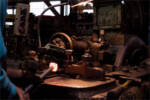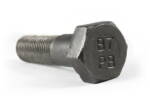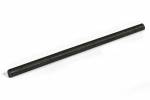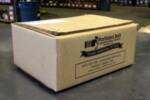Kailey's FAQs
With F3125 Grade A325 heavy hex structural bolts, it is widely known that the “T” at the end of the grade, i.e. A325T, refers to the fastener being fully threaded rather than having a standard structural bolt thread length. At Portland Bolt the question of A490T bolt availability comes up regularly and the truth is... Read more

Portland Bolt uses National Upsetters to hot-forge the heads onto bolts. The end of the round bar is heated using an induction process and placed horizontally into the upsetter where a plunger compresses the heated steel into the shape of the bolt head. Because this process is a horizontal forging process, Portland Bolt is only... Read more

The short answer is no. The A193 specification is specifically designed for fasteners being used in high temperature, high pressure situations. In the ASTM specification, it states that the nuts shall conform to the A194 specification and it does not provide an alternate substitute. Though A563-DH and A194-2H are very similar, they are not interchangeable... Read more

In short, no, the thread length of A193 B7 bolts is not the same as the thread length of A325 bolts. The F3125 Grade A325 specification covers heavy hex structural bolts which have standard fixed thread lengths shown in the table below. The thread lengths can be altered, but A325 bolts with nonstandard thread lengths must... Read more

The short answer is no. The A193 specification does not cover bolts larger than 1-1/2” in diameter for Class 2 materials. However, the reasoning behind this answer requires further explanation. Class 2 materials get their strength through the process of strain hardening (also known as work hardening or cold working). This process causes the grain structure... Read more
In 2015, ASTM created a new, all-inclusive specification F3125 to cover A325 and A490 bolts under the same specification. There were many changes made to the specification, but it is still not acceptable to manufacture fully threaded rods in the A325 or A490 specifications. The new F3125 specification states in section 4.1.3: Bolts with thread... Read more

In order to answer this question, we must first define what conflict minerals are. Any natural resource that is mined in a conflict zone and sold to perpetuate fighting is defined as a conflict resource. The conflict minerals that are most commonly extracted are cassiterite (used for tin), wolframite (used for tungsten), coltan (used for... Read more
According to the Incoterms 2010 standard which is published by the International Chamber of Commerce, the acronym “FOB” stands for “free on board.” In the US, this acronym “FOB” is commonly used when shipping goods to acknowledge who is responsible for the costs associated with loading, transporting and/or the point at which the ownership of... Read more

Portland Bolt manufactures a wide range of bolts and fasteners to numerous standards set by many different organizations and specifying committees. There are many different organizations for fasteners, all of which have their own set of standards and guidelines for manufacturing. We, as estimators, are often asked what the acronyms for such organizations and committees... Read more
The short answer is, yes! In 2015, ASTM created F3125 which is a new, all-inclusive specification for structural bolts that consolidated and replaced the following six stand-alone ASTM standards: A325, A325M, A490, A490M, F1852 and F2280. Under the new F3125 specification, A325 fasteners can be made in head styles other than heavy hex as long... Read more

